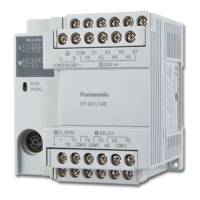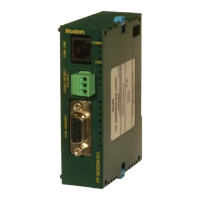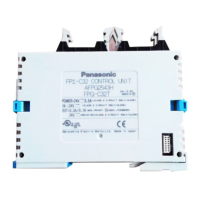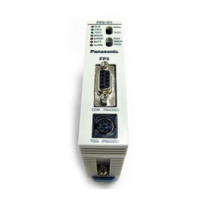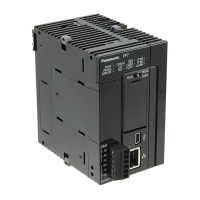● When selecting the table setting mode, the control active flags (R911C to R911F) are not
activated. Confirm that other instructions for the table setting mode (F380 to F383) are
not activated using the above BUSY flags (X28 to X2D), and execute each instruction.
■
Allocation of I/O signals (Output)
Signal name
I/O No.
Axis 1 Axis 2 Axis 3 Axis 4 Axis 5 Axis 6
CH0 CH1 CH2 CH3 CH4 CH5
When using
the
transistor
output type
Control Unit
CW output or
Pulse output
Y0 Y2 Y4 Y6 Y8 YA
CCW output or
Sign output
Y1 Y3 Y5 Y7 Y9 YB
Deviation
counter
clear
output
C14 Y4 Y5 - - - -
C30 Y8 Y9 YA YB - -
C60 YC YD Y10 Y11 Y12 Y13
System stop Y20
Error clear request Y21
Emergency stop Y50 Y51 Y52 Y53 Y54 Y55
Deceleration stop Y58 Y59 Y5A Y5B Y5C Y5D
J point control speed change Y60 Y61 - - - -
Near home input
(Note 1)
(Y70) (Y71) (Y72) (Y73) (Y74) (Y75)
Over limit input (+)
(Note 1)
(Y80) (Y82) (Y84) (Y86) (Y88) (Y8A)
Over limit input (-)
(Note 1)
(Y81) (Y83) (Y85) (Y87) (Y89) (Y8B)
When using
the relay
output type
pulse I/O
cassette
CW output or
Pulse output
Y100 Y200 - - - -
CCW output or
Sign output
Y101 Y201 - - - -
Deviation counter clear output
(Note 1)
Y102 Y202 - - - -
(Note 1) The near home input, over limit input (+) and over limit input (-) will be valid when an arbitrary input is
allocated and the output relay indicated in the above table turns ON.
4.1.2 When Using Pulse Output Function (FP-X Compatible Instruction Mode)
● The following reserved areas are allocated to the home input or control active flag.
● Allocate an arbitrary input to the near home input or pulse output stop signal (emergency
stop).
4.1 Confirming I/O Allocation
WUME-FPXHPOSG-01 4-3
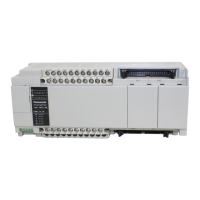
